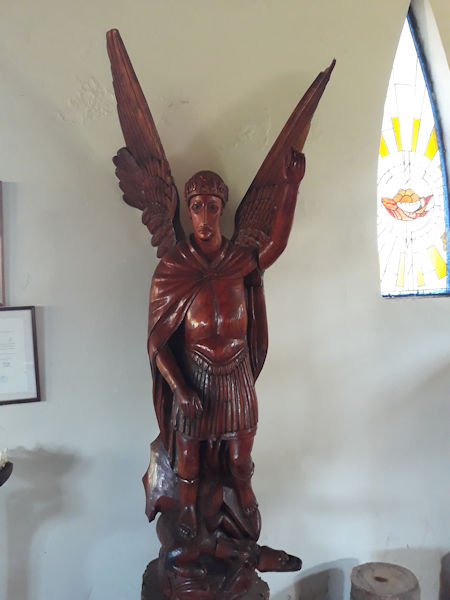Easter
Island(2020)
Church and Museums
Church and Museums
We
attended Mass at Holy Cross Church which was founded in 1937
The people of the island were converted to Roman Catholicism in the 1860s The Church blends the Rapa Nui culture with Christian symbols The Tangata manu ("Bird Man") cult was the island religion between the moai era and the Christian era |
|
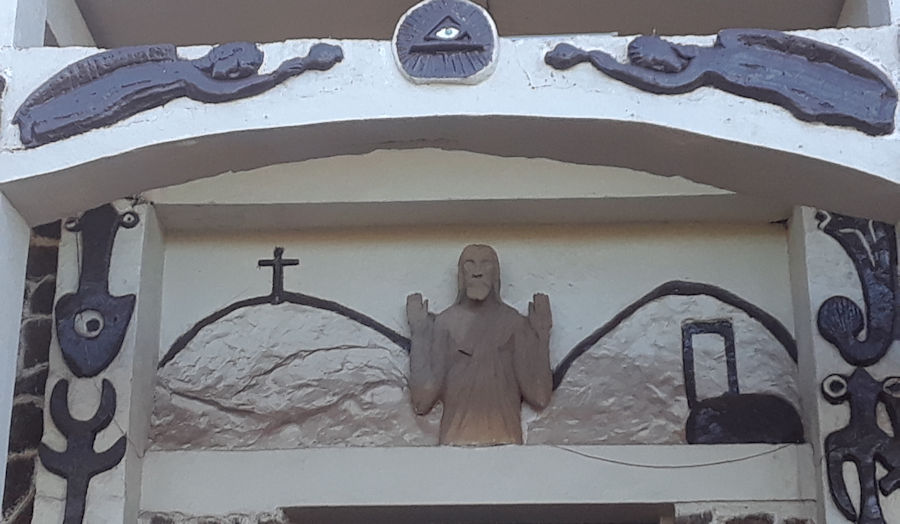 |
|
Traditional
Rapa Nui & Christian symbols together |
A
new building with a "turtle design" |
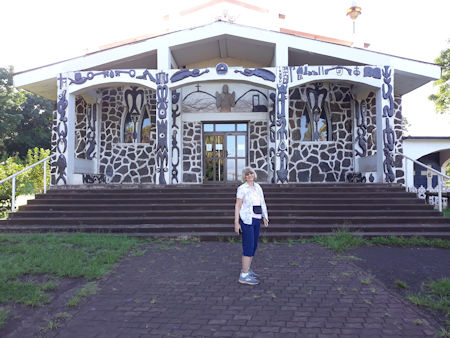 |
was
proposed by the Vatican but rejected by the congregation 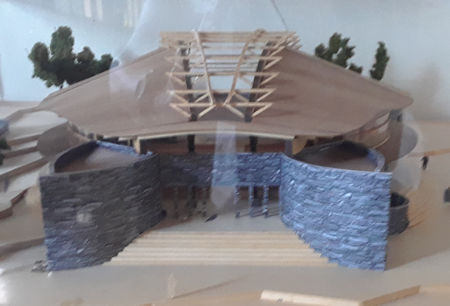 |
When
the church was unoccupied, our
guide Sebastian pointed out details of the interior |
|
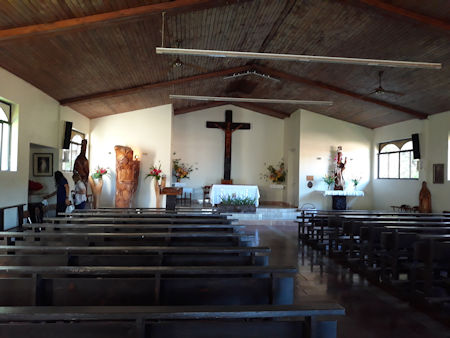 |
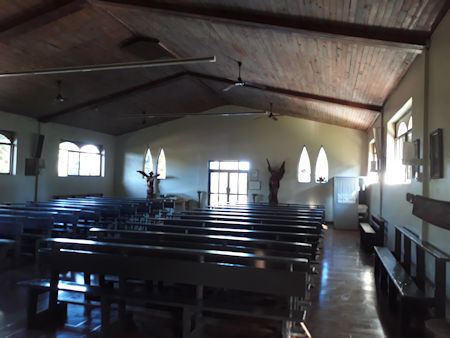 |
All
the statues combine Rapa Nui tradition with Christianity This is Saint Francis holding a bird in his hand |
|
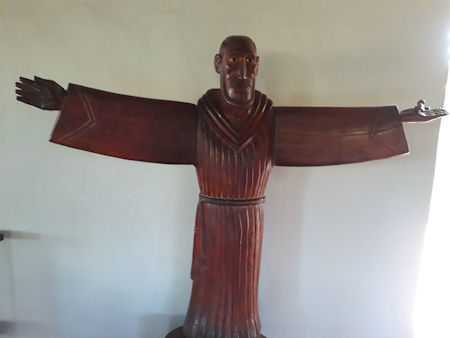 |
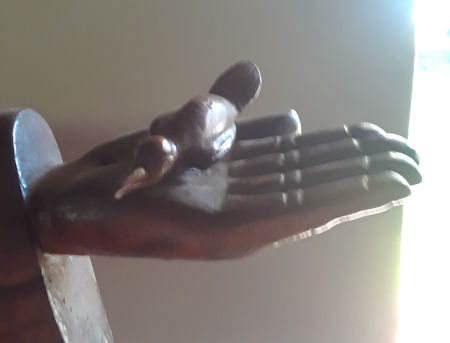 |
His features have a Moai influence |
|
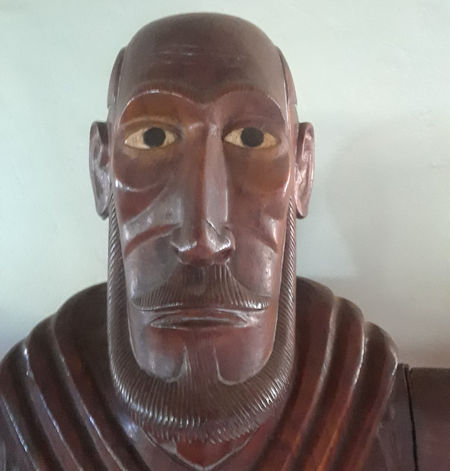 |
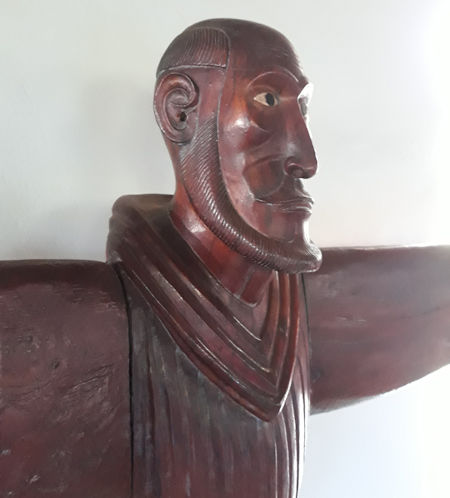 |
The Archangel Michael |
|
|
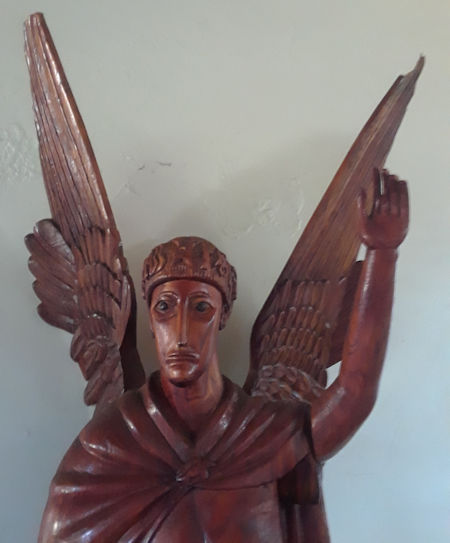 |
This is Mary crowned with local flowers |
|
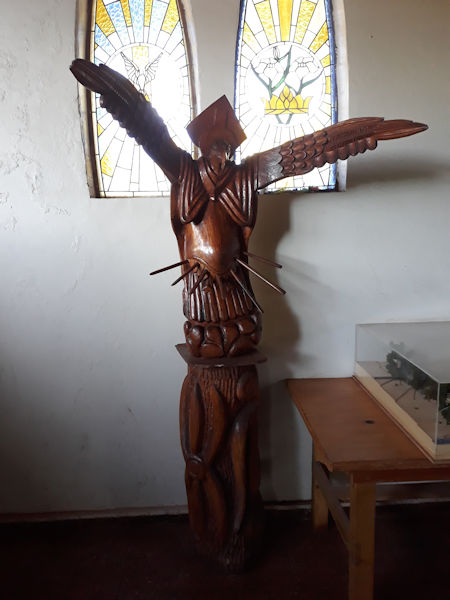 |
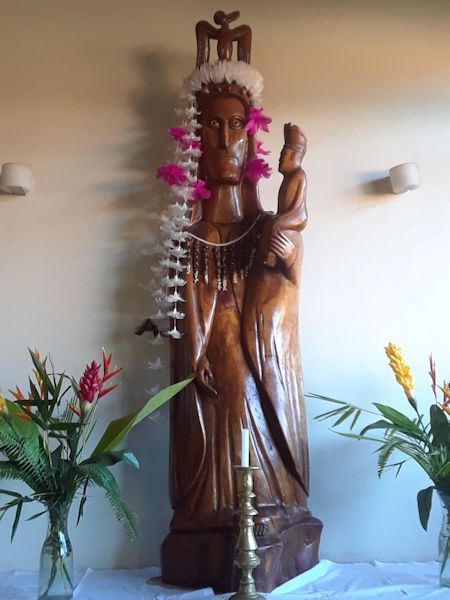 |
The
Holy Family is a sculpture in a tradition of the Rapa Nui People |
|
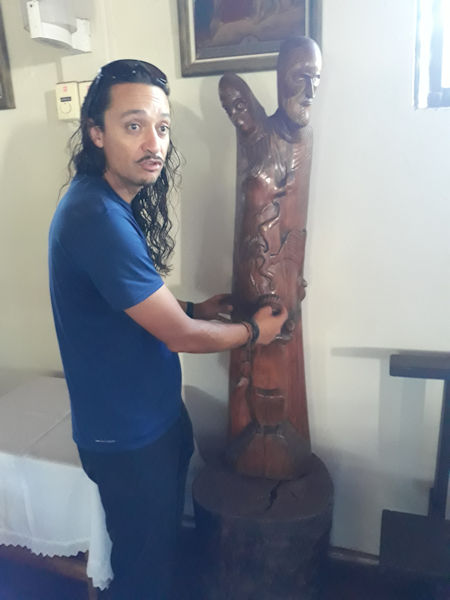 |
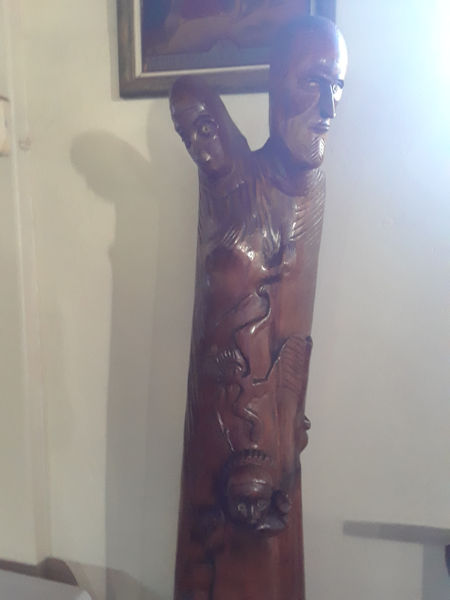 |
Baby
Jesus is at the bottom of the sculpture Not sure about the bird figure? Holy Spirit with Birdman influence? |
|
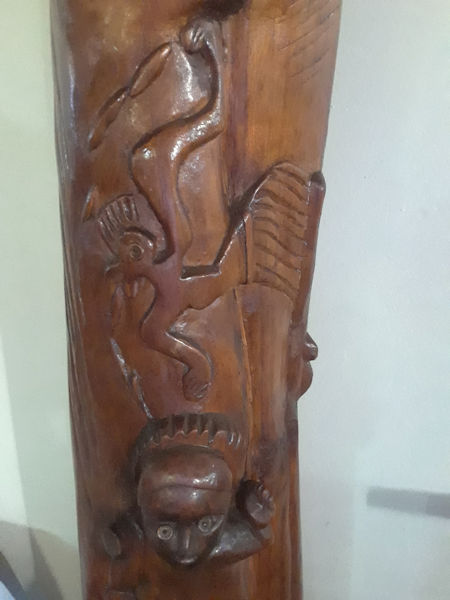 |
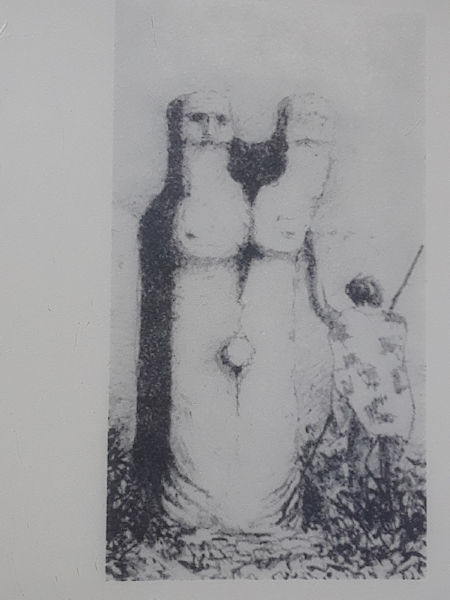 |
This
is the statue of Jesus Christ |
|
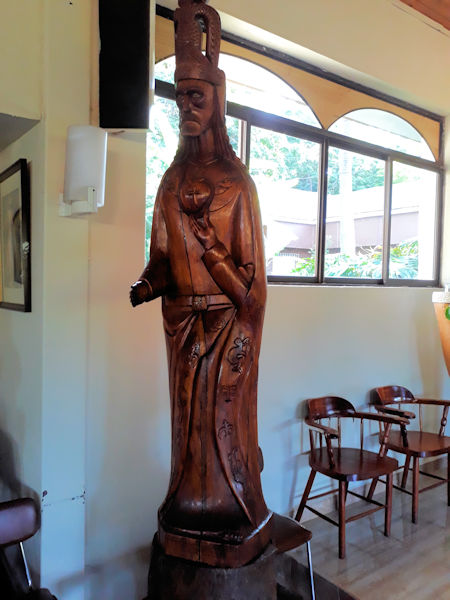 |
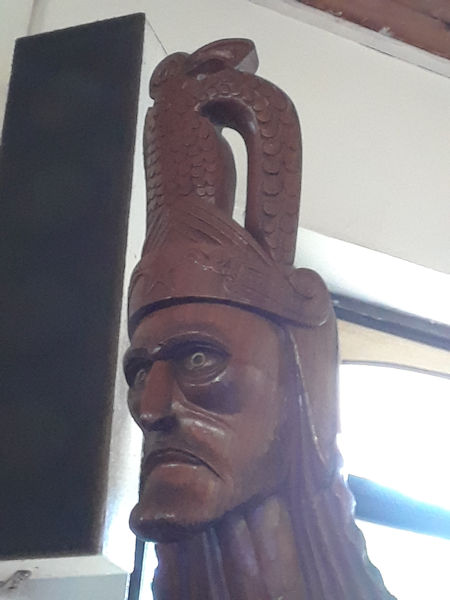 |
The
Birdman figure and other traditional symbols are included |
|
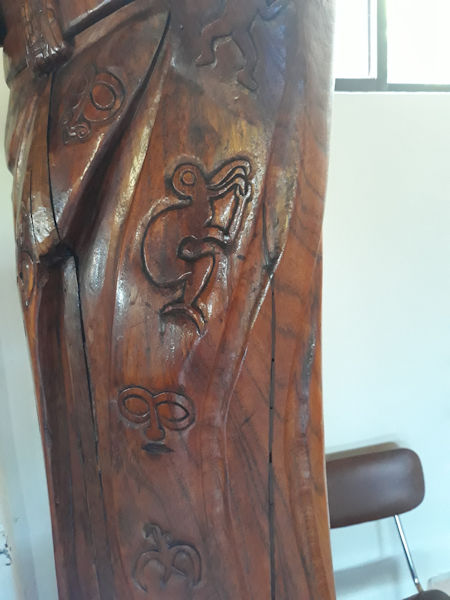 |
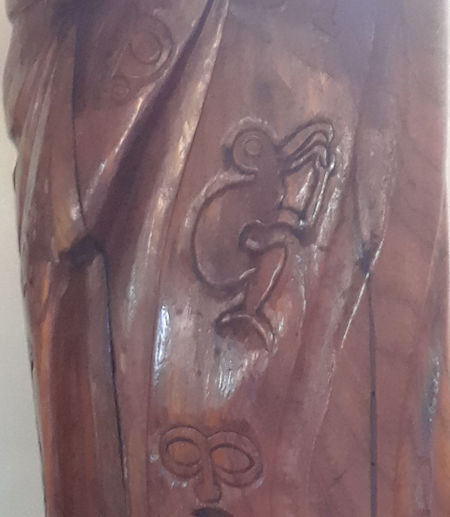 |
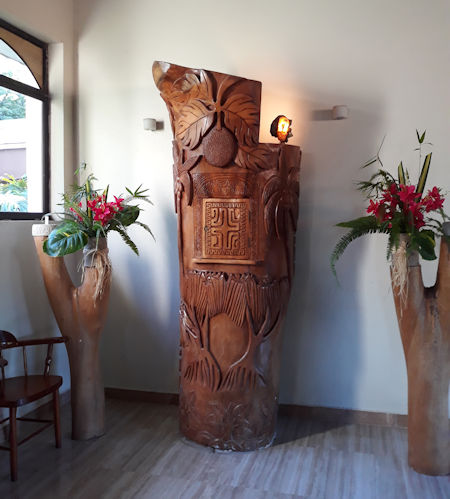 |
The
Tabernacle and the Lecturn also blend Rapa Nui culture with Christian symbols The Mass was said in Spanish Easter Island became part of Chile in the 1860s but the priest also addressed the people in the Rapa Nui language 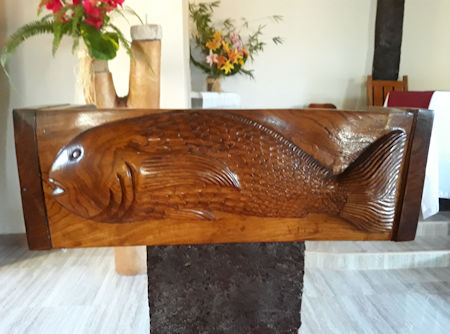 |
Our
next stop was a recreation of an ancient Rapa Nui Village -
an outdoor museum similar to those in Europe |
|
Archeologists have studied the remains of village locations to create this site This is similar to what was done at Stonehenge 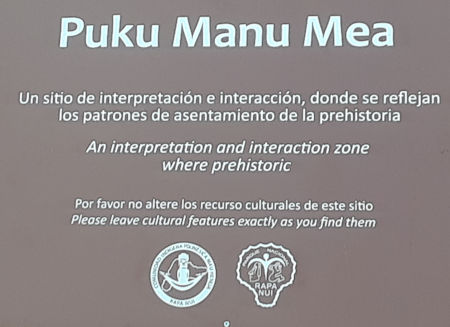 |
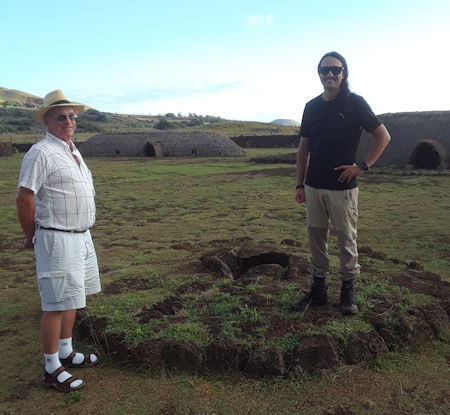 |
The
houses are shaped as overturned boats since that was likely their first dwellings when arriving from over the sea |
|
 |
|
Safe
havens for animals with the roof used for plants |
|
 |
|
Fire
Pit |
Chicken
House |
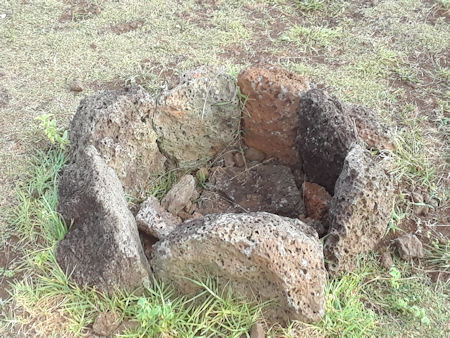 |
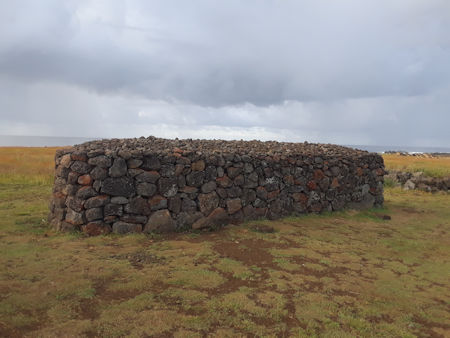 |
At
night the chickens would go into the safety of this rock house
and the "door" would be secured with rocks This protected them from animal predators and anyone who would steal them since only the owner was aware of which rocks could be removed. I KNOW where the door is thanks to Sebastian |
|
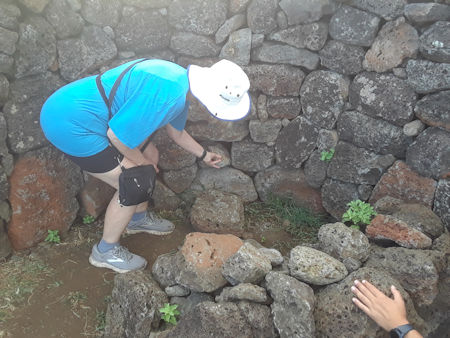 |
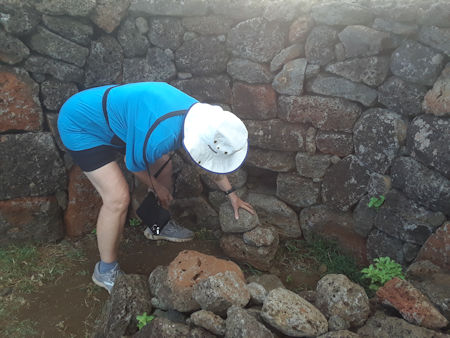 |
"Here
chick, chick chick" Look carefully to see the brown chicken
emerging |
|
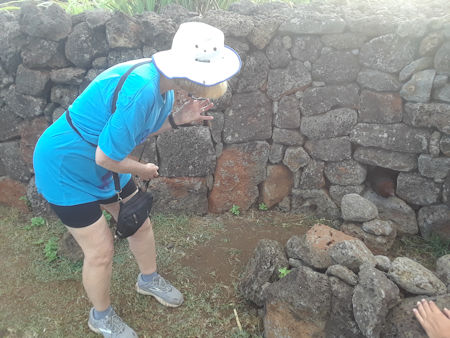 |
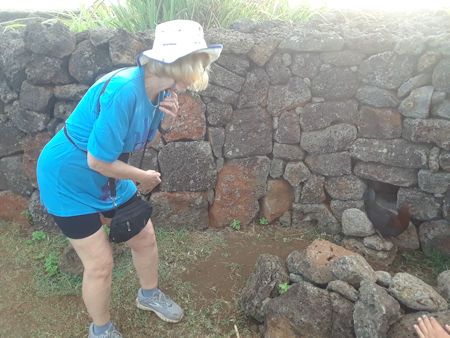 |
This
white chicken is easier to see |
|
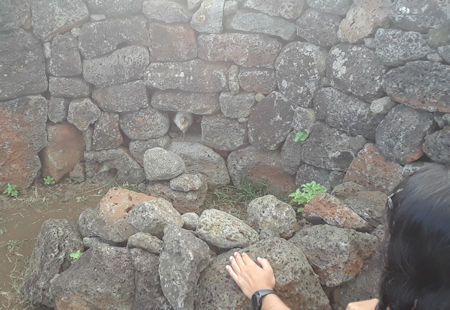 |
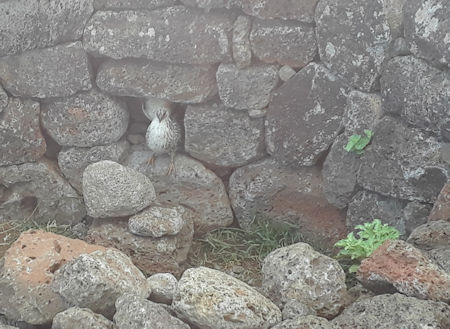 |
Some
perspective as to the height of the dwelling |
Plants
on the roof of the chicken house |
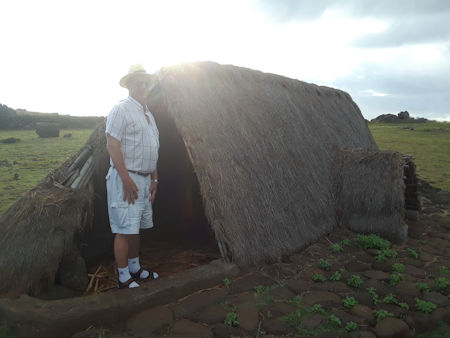 |
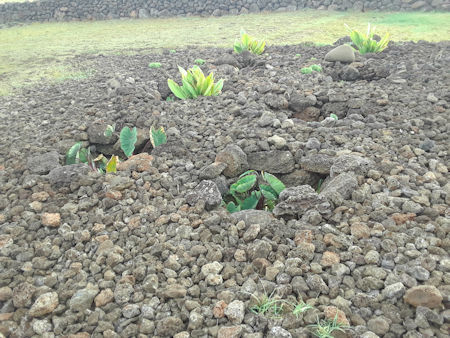 |
In
the Museum in Hanga Roa Sebastian directed us to this photo The woman on the right, dressed in white, is his grandmother |
|
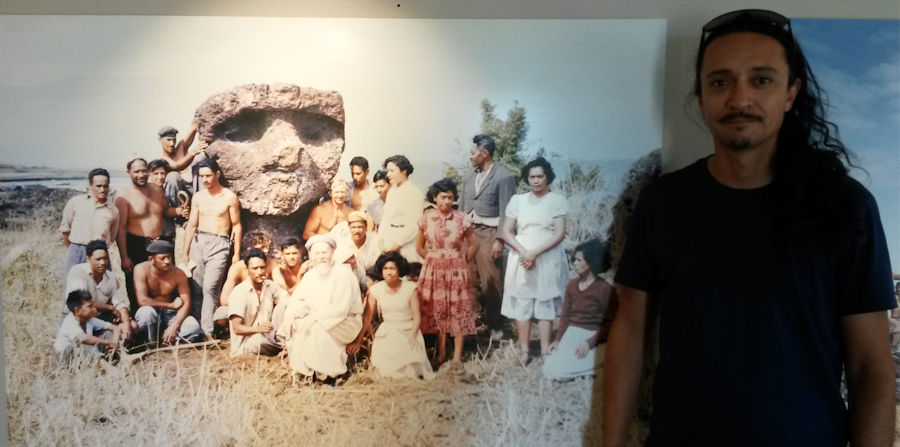 |
|
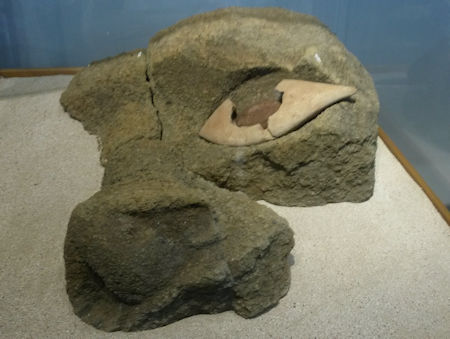 |
The
shell and coral eyes of the moai are a rare phenomenon on the island today The whites of the eyes were made of pieces of sea shell, the irises of inlaid coral The eye sockets were not carved and filled until after the moai were set in place on the platforms Many examples have since been removed or fallen out. |
Tools
which were used by the Rapa Nui people |
|
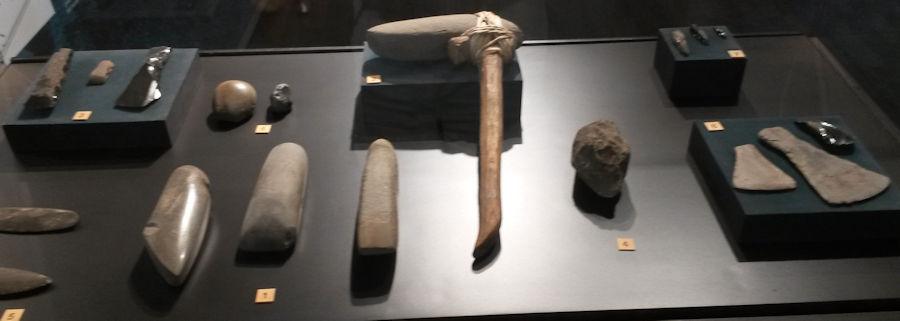 |
|
From
the time they were created the archaeological structures
of the Rapa Nui culture (Moai,
rock art & petroglyphs)
have suffered the effects of different deterioration processes (erosion, cracks, fractures, plant growth and weather) Because of the increase of tourism, a new threat to this heritage has emerged - the Human Race It is important for ALL visitors to respect and observe the restrictions required by the National Park of Rapa Nui |
|
An
additional threat to the ecology of Easter Island The sculpture outside the museum was created from plastic discarded in the ocean Volunteers have the near impossible task of clearing the beaches of waste originating thousands of miles away and carried here by currents 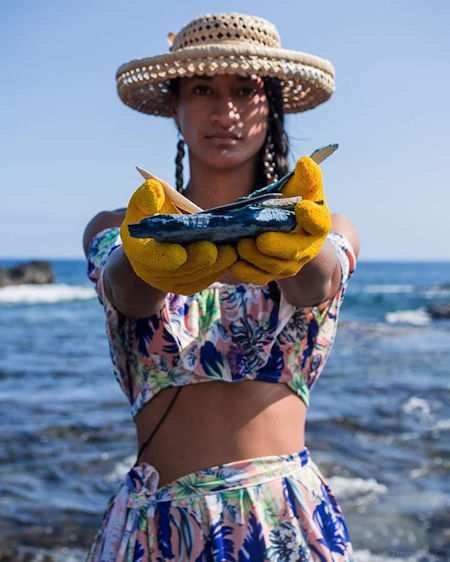 |
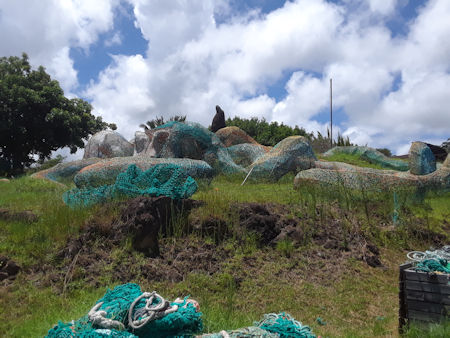 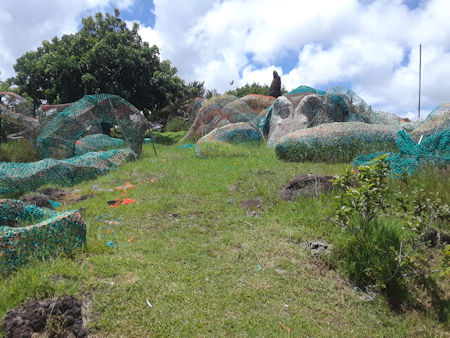 |

